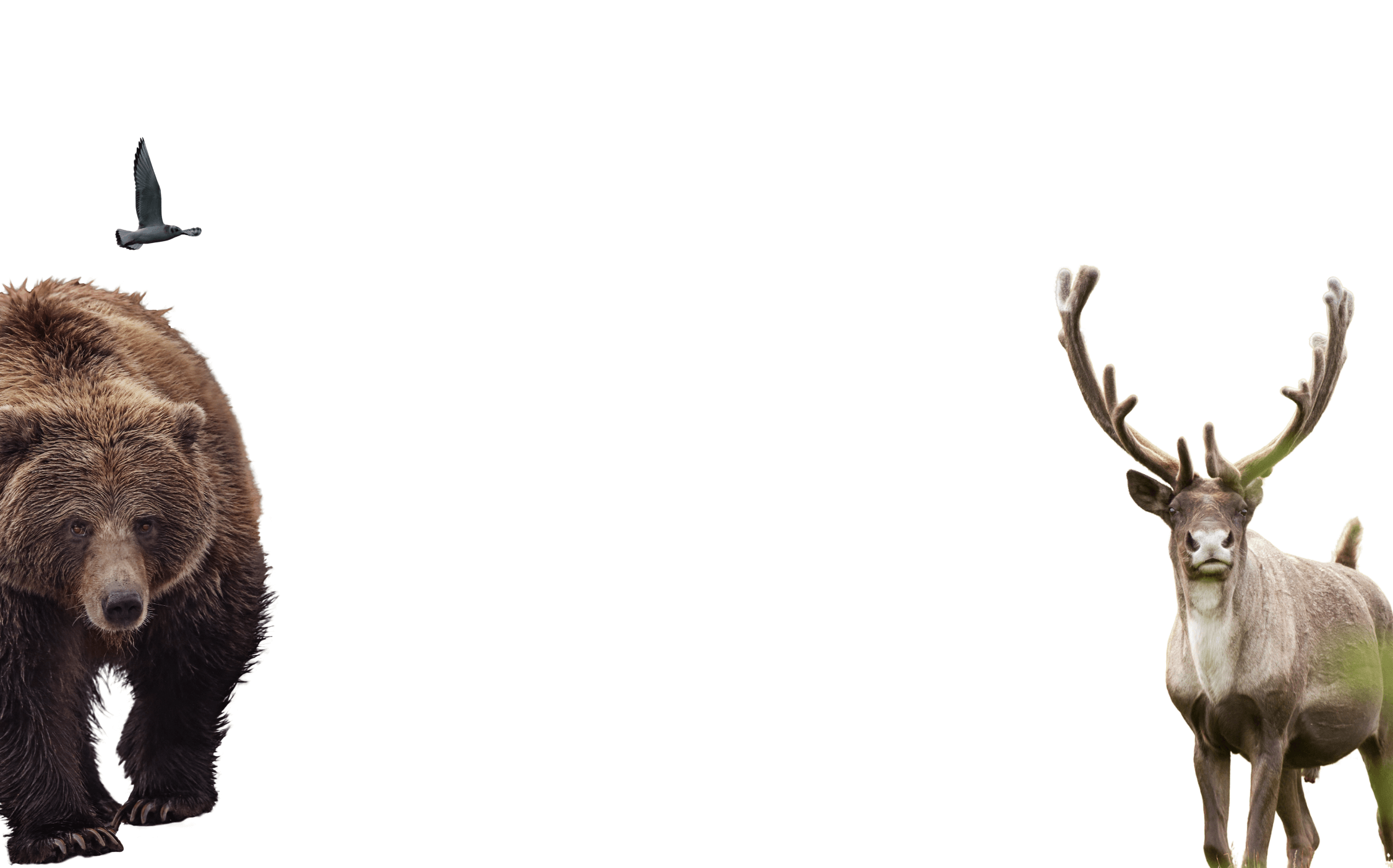
News Release: Caribou Conservation Agreements Failing Caribou
May 29, 2024
- •
- •
- •
TORONTO | TRADITIONAL TERRITORY OF THE MISSISSAUGAS OF THE CREDIT, ANISHNABEG, CHIPPEWA, HAUDENSOAUNEE AND WENDAT PEOPLES (May 29, 2024) — Voluntary conservation agreements between provinces and the federal government are failing to protect and recover threatened caribou populations, recent progress reports show. Specifically, reports from Alberta and Ontario show that recovery actions are insufficient to achieve recovery in the face of expanding industrial activity in caribou habitat.
Under Section 11 of the federal Species at Risk Act, voluntary conservation agreements are recommended to “benefit a species at risk or enhance its survival in the wild.” To date seven conservation agreements have been signed between the federal government and provinces. Alberta and Ontario are the first for which progress reports have been released.
Despite the existence of caribou conservation agreements, federal directives to implement a limit for habitat disturbance have not been met. All of Alberta’s 15 caribou ranges on provincial public lands have surpassed the maximum 35 per cent disturbed habitat threshold outlined in the federal recovery strategy and, shockingly, six ranges have less than 10 per cent undisturbed habitat remaining. Ontario has completely failed to incorporate the disturbance threshold into its forest management planning. While the province claims that its dated policy suite provides an “alternative approach,” an expert panel recently noted that it was unclear how the policies fit together and how they were being implemented.
The federal government notes that Ontario lacks a restoration approach. In Alberta, where very little undisturbed habitat remains, less than one per cent of the 209,000 kilometres of legacy seismic lines identified for restoration in the 2022-23 report has been restored. Alberta relies on the 2020 Liability Management Framework to address inactive and orphaned gas well restoration within caribou habitat, yet it’s unclear if the funding or incentive mechanisms are sufficient for closure and restoration to occur at a sufficient rate to facilitate caribou recovery.
Most tellingly, Alberta and Ontario continue to approve expanding industrial disturbance — in Alberta, even in ranges that have just a sliver of remaining undisturbed habitat, and in Ontario, into the remaining intact habitat on which caribou depend.
According to CPAWS Northern Alberta program director Tara Russell, “Lack of progress, long timelines, new industrial disturbance approvals and constant delays for land-use planning (a process promised under the conservation agreements) call into question Alberta’s commitment to caribou recovery. These reports highlight the dismal amount of progress made for caribou in the province.”
Alberta Wilderness Association conservation specialist Devon Earl notes, “The Little Smoky caribou herd has 0.7 per cent undisturbed habitat within its range, and Alberta is still approving more forest harvest and industrial developments there. That does not show a commitment to caribou recovery or a realistic balance between the environment and the economy.”
“It is clear that, despite the conservation agreements, the policy landscapes in Alberta and Ontario are aimed first and foremost at maintaining status quo industrial operations,” said David Suzuki Foundation boreal project manager Rachel Plotkin. “It’s appalling that Ontario has not yet incorporated disturbance limits into its forest management planning, and that Alberta continues to kill wolves while it expands the industrial footprint in ranges already ravaged by disturbance.”
For more information or a media interview, please contact:
Devon Earl, Alberta Wilderness Association: dearl@abwild.ca, (403) 283-2025
Elise Gagnon, CPAWS Northern Alberta: egagnon@cpaws.org, (780) 915-3316
Kate Kourtsidis, David Suzuki Foundation: kkourtsidis@davidsuzuki.org, (613) 806-8184
Sebastien Fekete, Mikisew Cree First Nation: sebastien.fekete@mcfngir.ca
Background information
- In Alberta, approvals for forestry, energy, mining and linear disturbance in 2022 and 2023 will add an estimated 55,891 hectares of human footprint in caribou ranges in Alberta. Approvals in the Little Smoky range in west-central Alberta for 2022 and 2023 are estimated to add a future footprint of up to 3.4 per cent of the range, which is currently only 0.7 per cent undisturbed! While approving new habitat disturbance, Alberta relies on the most intensive wolf cull program in the country to prop up caribou populations, although the root cause of caribou decline is habitat loss and fragmentation.
- According to the Alberta progress report, caribou in mountain ranges “have demonstrated dramatic declines in range level occupancy and distribution. This has been particularly evident for the caribou populations in west-central Alberta, with large declines in distribution evident for the Redrock-Prairie Creek, Narraway and Little Smoky populations. In response to anthropogenic habitat change, the Redrock-Prairie Creek, Narraway and A la Peche populations are increasingly demonstrating reduced annual migration to their forested foothills traditional winter ranges. … These populations are increasingly restricted to mountainous areas on a year around basis. Mountainous areas are suboptimal winter habitat for these caribou, and this increasingly restricted distribution contributes to elevated rates of caribou mortality.” (emphasis added)
- Conservation agreements for boreal caribou are in place between the federal government and Ontario, Northwest Territories, Manitoba, Alberta, Newfoundland and Labrador, the Yukon and Saskatchewan.
- When the federal Species at Risk Act was developed, significant input went into developing conservation agreements to ensure they were used to implement measures that benefited a species— not as cover for ongoing harms.
For example, in 2001, when the act was being developed in the Standing Committee of Environment and Sustainable Development, Justice Department senior counsel David Near noted:
When we drafted clause 11, the sole intent was that a clause 11 agreement would only be beneficial to the species. When we drafted clause 74, it was contemplated that there might be instances in which there would be a negative impact … If we’re speaking in terms of consistency, they are two different types of agreement. One is for the benefit of the species — in effect, a stewardship-type agreement. The other contemplates a permitting or licensing situation in which someone may be doing something that may have a negative impact on the species, but the government has decided that, following certain procedural steps, such an activity will be allowed.